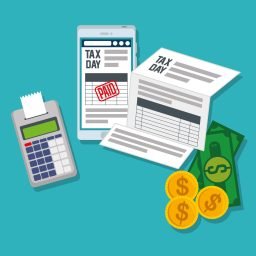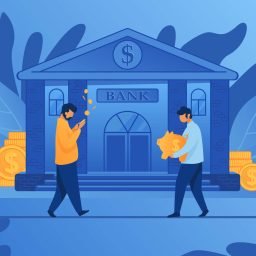
Debt can be a tricky thing to manage, but it’s an important part of personal finance that everyone should understand. Whether you’re dealing with student loans, credit card balances, a mortgage, or other types of debt, learning how to effectively manage your debt can have a significant impact on your overall financial well-being.
In this blog post, we’ll dive into the key things you should know about managing debt effectively. We’ll cover strategies for paying down debt, tips for avoiding new debt, and advice for maintaining a healthy relationship with your finances. By the end, you’ll have a better understanding of how to take control of your debt and reach your financial goals.
Understanding Different Types of Debt
Before we get into the tactics of managing debt, it’s important to first understand the different types of debt you may encounter. The most common forms of debt include:
Credit Card Debt
Credit card debt is one of the most prevalent forms of debt in the United States. It often comes with high interest rates, which can make it challenging to pay off. Credit card debt is considered “unsecured” debt, meaning it’s not tied to a specific asset like a house or car.
Student Loans
Student loans are a type of debt taken on to finance higher education. They can come in the form of federal student loans, private student loans, or a combination of both. Student loans often have lower interest rates than credit cards, but the repayment period can be much longer.
Mortgages
A mortgage is a loan used to purchase a home. It’s considered “secured” debt, as the home serves as collateral for the loan. Mortgages typically have lower interest rates than other types of debt, but they involve a significant financial commitment over many years.
Auto Loans
Auto loans are used to finance the purchase of a vehicle. Like mortgages, auto loans are considered secured debt, with the vehicle serving as collateral. Interest rates on auto loans can vary widely depending on factors like your credit score and the type of vehicle you’re purchasing.
Personal Loans
Personal loans are a type of unsecured debt that can be used for a variety of purposes, such as consolidating existing debt, financing a major purchase, or covering unexpected expenses. Interest rates on personal loans can range from relatively low to quite high, depending on your creditworthiness.
Understanding the differences between these types of debt is important, as the strategies for managing them may vary.
Strategies for Paying Down Debt
Now that you have a better understanding of the different types of debt, let’s dive into some effective strategies for paying them down.
The Debt Snowball Method
The debt snowball method is a popular strategy for paying off debt, particularly for those with multiple credit card balances or other types of unsecured debt. The basic idea is to focus on paying off your smallest debt first, while making minimum payments on your other debts. Once the smallest debt is paid off, you apply the amount you were paying on that debt to the next smallest balance, creating a “snowball” effect that helps you gain momentum in paying down your debts.
The key benefits of the debt snowball method are:
- It provides a sense of accomplishment as you pay off debts, which can be motivating.
- It focuses on the debts with the smallest balances first, which can help you build confidence and momentum.
- It’s a relatively simple strategy that’s easy to understand and implement.
The Debt Avalanche Method
The debt avalanche method is an alternative strategy that focuses on paying off the debts with the highest interest rates first. This approach can save you more money in the long run, as you’ll be paying less in interest charges.
The steps for the debt avalanche method are:
- Make a list of all your debts, along with their interest rates.
- Focus on paying off the debt with the highest interest rate first, while making minimum payments on your other debts.
- Once the highest-interest debt is paid off, move on to the debt with the next highest interest rate.
- Repeat this process until all of your debts are paid off.
The key benefits of the debt avalanche method are:
- It can save you more money in the long run by minimizing the amount of interest you pay.
- It’s a mathematically optimal approach to paying off debt.
- It can be more difficult to stay motivated, as you may not see debts being paid off as quickly as with the debt snowball method.
Debt Consolidation
Debt consolidation is another strategy for managing debt effectively. This involves taking out a new loan, such as a personal loan or a balance transfer credit card, to pay off multiple existing debts. The goal is to simplify your repayment process and potentially reduce the overall interest you’re paying.
The key benefits of debt consolidation include:
- Potentially lower interest rates, which can save you money over time.
- Simplified repayment with a single monthly payment.
- Improved credit utilization ratio, which can positively impact your credit score.
However, it’s important to be cautious with debt consolidation, as it can sometimes lead to taking on additional debt if not managed properly.
Negotiating with Creditors
In some cases, you may be able to negotiate with your creditors to lower your interest rates or adjust your repayment terms. This can be particularly helpful for credit card debt, where interest rates can be quite high.
To negotiate with creditors, you’ll want to:
- Gather information about your current debt, including balances, interest rates, and payment history.
- Explain your financial situation and why you’re seeking a more favorable repayment plan.
- Be polite and persistent, as creditors may be willing to work with you to avoid defaulting on the debt.
- Get any agreed-upon changes in writing to ensure they’re properly documented.
Negotiating with creditors can be time-consuming, but it can potentially save you a significant amount of money in the long run.
Avoiding New Debt
While paying down existing debt is crucial, it’s also important to focus on preventing new debt from accumulating. Here are some tips for avoiding new debt:
Create a Budget and Stick to It
Developing a comprehensive budget and sticking to it is one of the most effective ways to avoid new debt. By tracking your income and expenses, you can identify areas where you may be overspending and make adjustments to ensure you’re living within your means.
Use Cash Instead of Credit
Whenever possible, try to use cash or debit cards instead of credit cards for your purchases. This can help you avoid the temptation to overspend and accrue new debt.
Avoid Impulse Purchases
It’s easy to get caught up in the moment and make purchases you may later regret. Before making a purchase, take a step back and ask yourself if it’s truly necessary or if it’s just an impulse buy.
Build an Emergency Fund
Having a well-funded emergency fund can help you avoid turning to credit cards or other forms of debt to cover unexpected expenses. Aim to save enough to cover 3-6 months’ worth of living expenses.
Prioritize Saving and Investing
In addition to paying down debt, it’s important to focus on saving and investing for the future. This can help you build wealth and achieve your long-term financial goals.
Share Your Expertise, Build Your Business. Tired of limitations?
Create & sell online courses with Teachable. Keep 100% control. Start your free trial!
Maintaining a Healthy Relationship with Debt
Effectively managing debt is not just about the strategies and tactics you use – it’s also about developing a healthy mindset and relationship with your finances. Here are some tips for maintaining a healthy relationship with debt:
Understand the Difference Between “Good” and “Bad” Debt
Not all debt is inherently “bad.” Certain types of debt, like a mortgage or student loans, can be considered “good” debt if they’re used to finance assets that can appreciate in value or improve your earning potential. On the other hand, credit card debt and other high-interest, unsecured debt are generally considered “bad” debt.
Avoid Shame or Guilt Around Debt
It’s easy to feel ashamed or guilty about having debt, but it’s important to remember that debt is a common part of many people’s financial journeys. Avoid beating yourself up over past mistakes and instead focus on taking positive steps to improve your situation.
Seek Support and Accountability
Managing debt can be challenging, so don’t be afraid to seek support from friends, family, or financial professionals. Having someone to hold you accountable and provide encouragement can make a big difference.
Celebrate Small Victories
As you work to pay down your debt, be sure to celebrate your small victories along the way. Acknowledging your progress can help you stay motivated and focused on your long-term financial goals.
Conclusion
Effectively managing debt is a critical component of personal finance, and it’s something that everyone should strive to understand and implement. By learning about the different types of debt, implementing proven strategies for paying it down, and developing a healthy relationship with your finances, you can take control of your debt and achieve greater financial stability and security.
Remember, managing debt is a journey, and it may take time and persistence to see results. But by staying focused, disciplined, and committed to your financial goals, you can make significant progress and set yourself up for long-term success.
If you’re ready to take the next step in managing your debt effectively, I encourage you to review the strategies and tips covered in this blog post and start implementing them today. Your future self will thank you for the hard work and dedication.

















